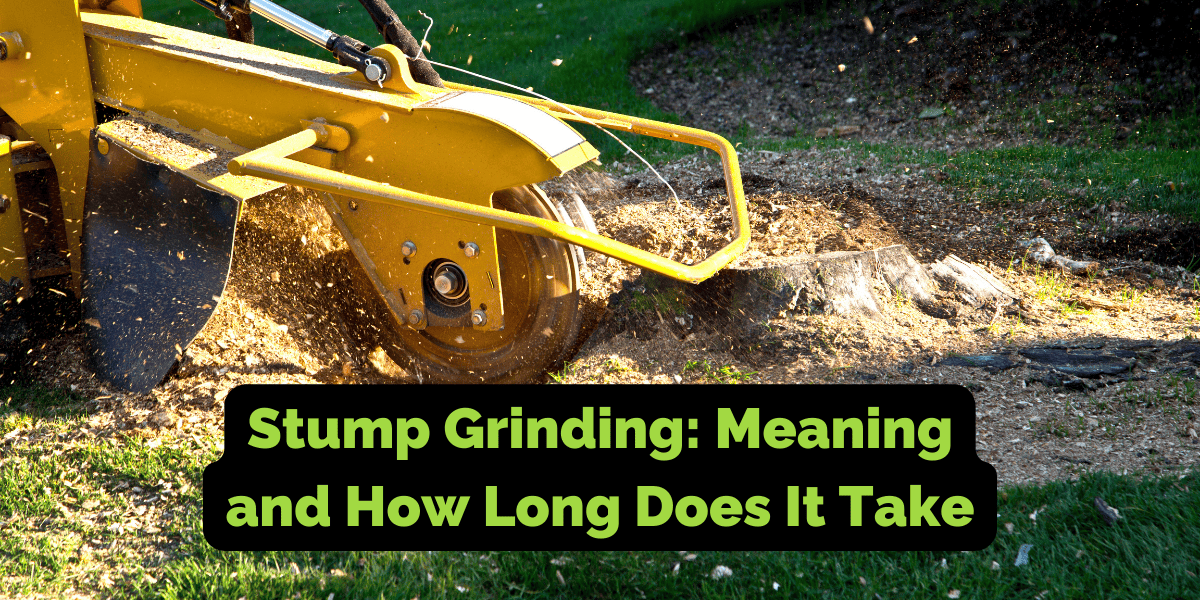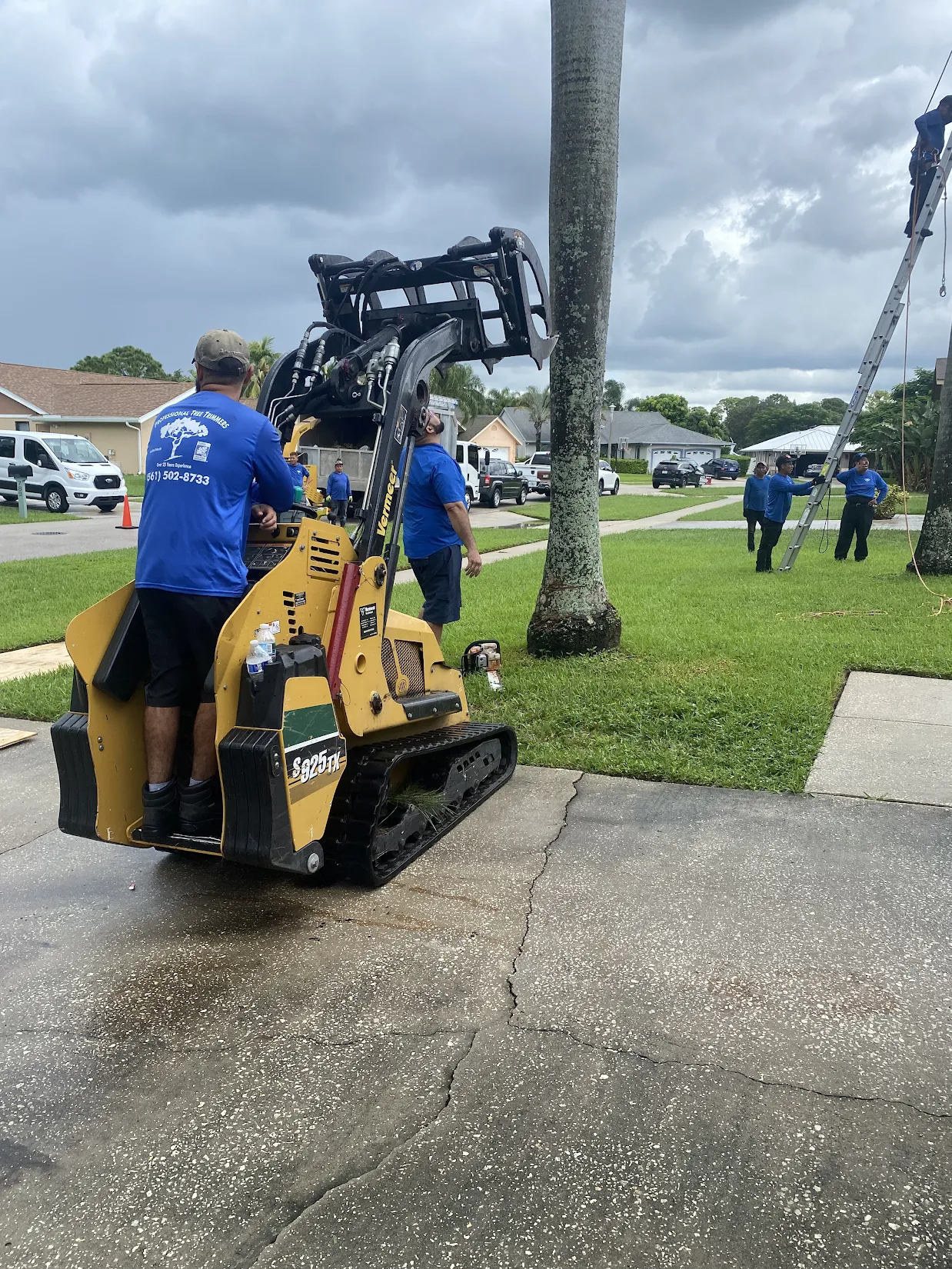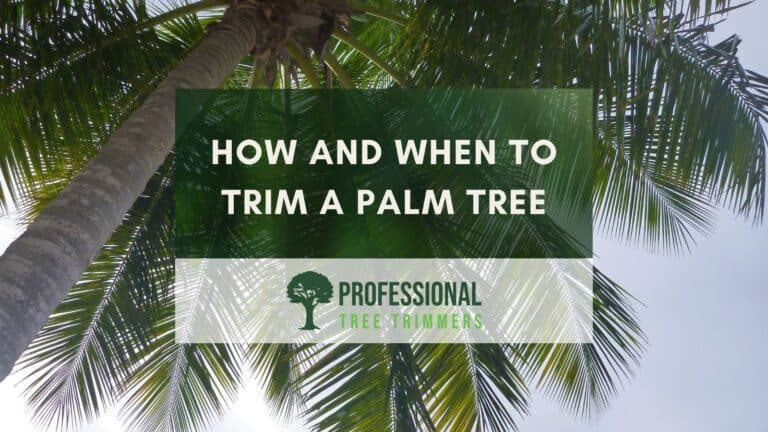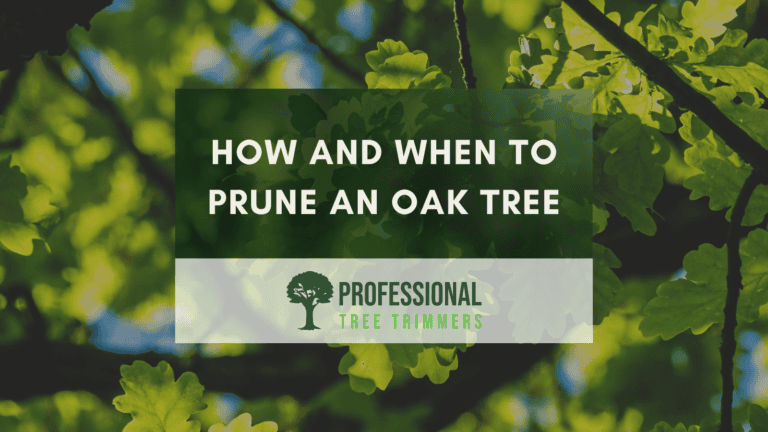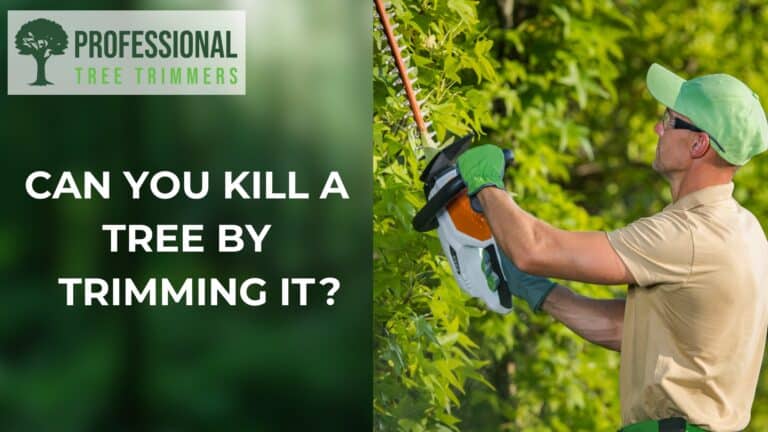Stump grinding utilizes a machine equipped with a spinning wheel and sharp teeth, and transforms tree stumps into wood chips, flattering your outdoor space. Lasting from 15 minutes to 2 hours per stump, it outpaces traditional methods, preventing pest infestation.
Beyond efficiency, stump grinding proves environmentally wise, avoiding intrusive removal techniques. Uncover how this method not only saves time but contributes to safety and the overall aesthetics of your landscape.
What is Stump Grinding?
Stump grinding is the process of using a machine, ranging from the size of a lawn mower to as large as a truck, equipped with a spinning wheel and sharp teeth to grind through wood and earth. This machine effectively turns tree stumps into small chips by grinding both the stump and its roots.
Apart from the visual appeal, stump grinding prevents the signaling of insects to take up residence in your yard. It’s a proactive measure to maintain the health of your remaining trees and the overall aesthetics of your outdoor space.
What is the process of Stump Grinding?
Tree professionals start by inspecting the area to ensure safety. They clear debris and assess the surroundings for hazards before proceeding. Here is the detailed process of stump grinding.
- Assessment: Evaluate the stump’s size, location, and surrounding area for any obstacles or underground utilities.
- Equipment Setup: Position the stump grinder in proximity to the stump. These grinders come in various sizes and types, including wheel and track grinders. Often the stump is cut down closer to the ground to reduce the amount of grinding.
- Safety Measures: Wear protective gear, including goggles and ear protection, and ensure a safe distance from the grinder during operation.
- Stump Grinding: Lower the grinder onto the stump and begin the grinding process. The grinder’s rotating blade chips away at the stump, turning it into wood chips.
- Depth Control: Grinding at least 4 to 16 inches below the ground ensures complete stump removal.
- Cleanup: Collect the generated wood chips for disposal or reuse as mulch. Or you can push the wood chips into the hole left by the stump.
- Fill with Soil: Fill the resulting hole with soil, wood chips and create an even surface.
How Long Does It Take for A Stump to Grind?
For a single stump, the grinding process typically spans from 15 minutes to 2 hours, with some professionals finishing the job within 30 minutes to an hour. Larger stumps might extend the process to several hours or even days. The efficiency of stump grinding shines as it eliminates the stump, turning it into wood chips and ensuring a much faster and streamlined removal compared to other methods. If considering this method, be prepared for a range of timeframes, from swift minutes to a few hours, all contributing to efficiently reducing and eliminating the stump.
What are the Advantages of Stump Grinding?
- Increase Property Value: Stump grinding contributes to enhanced property aesthetics, potentially increasing its overall value.
- Create More Breathing Room: The process creates additional space, allowing for better utilization of the cleared area. Grinding eliminates stumps that can be challenging to maneuver around, especially in yards or landscapes.
- Save Time: Stump grinding is a quick and efficient method for removing tree stumps, saving considerable time compared to alternative removal methods.
- Environmentally Friendly: Stump grinding is considered environmentally wise, as it avoids more intrusive and potentially harmful removal techniques.
- Prevent Tree Regrowth: By eliminating the stump, the process helps prevent the regrowth of trees from the remaining roots.
- Prevent Accidents: Stump grinding helps avoid accidents and inconveniences associated with tripping over or colliding with protruding stumps.
- Improve Aesthetics and Regain Space: Grinding stumps improve the visual appeal of the landscape and allow for the reclamation of usable space.
- Protect Against Disease and Pests: Stump grinding can contribute to protecting the property against diseases and pests that might be attracted to decaying stumps. Stump grinding can help prevent termites and other pests from infesting homes.
- Stop Stump Sprouting: The process helps halt stump sprouting, preventing new growth from the remaining stump.
What Are the Disadvantages of Stump Grinding?
The following are some of the disadvantages associated with stump grinding:
- Mulch Residue: Stump grinding leaves behind wood chips/mulch, which can be a concern if you have no use for it. The excess mulch may need to be removed separately.
- Risk of Regrowth: Leaving the roots on the ground after stump grinding poses a risk of the tree regrowing. The roots might send out new shoots that can be challenging to manage.
- Decay and Fungus Growth: After stump grinding, the roots are chopped up, potentially leading to decay and fungus growth in the remaining wood. This can pose problems if you plan to replant the area.
- Noise Concerns: Stump grinding can be a loud process, which may cause disturbances, especially in neighborhoods with close neighbors. However, scheduling the job during off-peak hours or using equipment with a muffler can mitigate this issue.
- Cost Considerations: Stump grinding can be relatively costly, especially if you only have a few stumps to remove. Additionally, if you choose to operate the equipment yourself, proper safety equipment is necessary.
What Happens to The Wood from The Tree Stump After Grinding?
The wood from the tree stump is typically turned into wood chips or mulch through grinding. Stump grinding utilizes a specialized grinder that shreds the stump, including its roots, into small, manageable pieces. These wood chips can be repurposed for various uses, such as landscaping or mulching, contributing to sustainable waste management. Often these wood chips are used to fill in the hole where the tree was.
What Are the Alternatives to Stump Grinding to Remove a Tree Stump?
If you’re looking for alternatives to stump grinding to remove a tree stump, there are several effective methods you can consider:
- Manual Methods for Stump Removal: Grab a chainsaw, sledgehammer, and wedges for a hands-on approach. This manual method is effective for removing most tree stumps without the need for a grinder.
- Epsom Salt as a Natural Alternative: Consider Epsom salt as a cost-effective and natural alternative to stump grinding. With its dissolving properties, Epsom salt aids in the decomposition of the stump over time. You might need to drill holes to pour the Epsom salt in and cover the stum with a tarp so it does not get washed away with rain.
- Mattock, Digging Bar, and Shovel Technique: Clear the soil around the stump and its roots using a mattock, digging bar, and shovel. Follow up with a bow saw, mattock, and an ax to chop away at the stump manually.
- Chemical Stump Removers: Speed up the natural decomposition of the wood with chemical stump removers. These products are specifically designed to facilitate the breakdown of the stump without the need for grinding.
- Rock Salt for Accelerated Decay: Opt for rock salt to accelerate the decay process of the stump. It’s known for effectively killing and decaying the stump faster than natural decay. You will need to drill holes into the stump and pour rock salt into it. You will also need to pour some water into it for the next few days to dissolve the salt.
Can Trees Still Be Planted Where A Stump Grinding Took Place?
Yes, trees can be planted where stump grinding takes place. However, it is generally not recommended to plant directly over the ground-out stump. Planting nearby or adjacent to the stump is advised to avoid potential issues with decomposing wood and root remnants.
If you directly plant the tree over the stump grinding, then the new tree will have limited minerals to absorb. The sawdust/mulch has a high carbon-to-nitrogen ratio thus the new tree will not be able to get optimum nitrogen for itself. Also, the wood chips will make it hard for the new tree to spread its roots.
Is It Worth It to Grind a Stump?
Grinding a stump is worthwhile for efficient removal, turning the stump into sawdust. It’s a convenient and quicker option than other removal methods. If not then the stump might become a home to pests, fungi, and other organisms.
Is It Better to Grind a Stump or Dig It Up?
Choosing to grind a stump is often better than digging it up. Stump grinding is more manageable for homeowners, avoiding the labor-intensive process of digging. But if you want to plant a new try then you might want to go for a digging.
What Happens if You Don’t Grind a Stump?
If a stump isn’t ground, it may lead to pest problems, and the remaining wood can decay, risking your property with pest infestation and fungus growth.
Does Stump Grinding Kill the Tree?
Stump grinding doesn’t kill the tree; it eliminates the visible part, but roots may persist. The roots can still be spread underground for 4-12 feet or more depending on the tree itself. The roots will deteriorate naturally but it may take 10 or more years for them to decay completely.
What Can I Use Instead of A Stump Grinder?
Instead of a stump grinder, alternatives include manual methods with tools like chainsaws, sledgehammers, wedges, or natural options like Epsom salt for decomposition.
Tree Stump Removal vs Stump Grinding?
Below is a table to present the differences between Stump removal and Stump grinding.
| Tree Stump Removal | Stump Grinding | |
| Process Intensity | Intensive process requiring complete removal of the stump and roots, leaving a hole. | Less intensive, focused on grinding the stump above ground level, leaving roots intact. |
| Regrowth Potential | Eliminates all parts of the tree, minimizing chances of regrowth. | Leaves roots intact, allowing the potential for regrowth. |
| Environmental Impact | May have a larger impact due to the removal of the entire stump and associated roots. | Generally considered more environmentally friendly as it preserves the root system. |
| Efficiency | Time-consuming, involving digging and removal. | Faster process, as it grinds the stump into mulch or chips. |
| Aesthetic Impact | Results in a visible hole in the ground. | Leaves a ground-level stump or mulch, often more aesthetically pleasing. |
| Equipment Used | Requires heavy machinery for digging and removal. | Utilizes a specialized grinder machine with rotating blades. |
Conclusion
Stump Grinding can effectively transform tree stumps into wood chips, enhancing your landscape’s appearance and saving time. It also prevents disease and pests and frees up usable space. Stump grinding is cost-effective, especially for smaller stumps, and can be accelerated with chemical stump removers. It’s a convenient choice for busy homeowners. While wood chips/mulch are left behind and there’s a risk of regrowth, these can be managed. Consider Professional Tree Trimmers for Stump grinding with an efficient solution for you.
